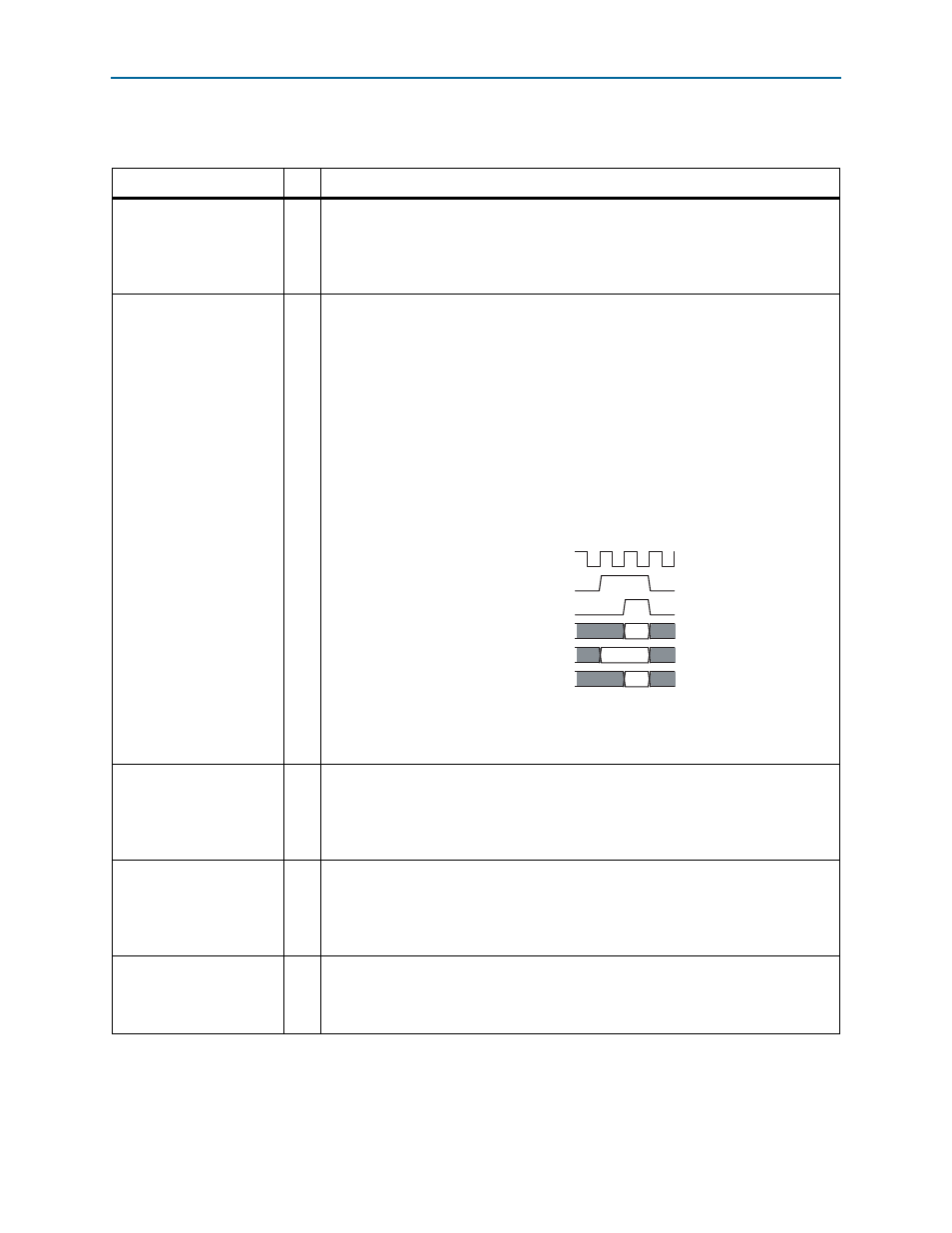Table b–2 – Altera IP Compiler for PCI Express User Manual
Page 322

B–4
Chapter :
Descriptor/Data Interface
IP Compiler for PCI Express User Guide
August 2014
Altera Corporation
describes the standard RX descriptor phase signals.
Table B–2. RX Descriptor Phase Signals (Part 1 of 2)
Signal
I/O
Description
rx_req<n>
O
Receive request. This signal is asserted by the IP core to request a packet transfer to the
application interface. It is asserted when the first 2 DWORDS of a transaction layer
packet header are valid. This signal is asserted for a minimum of 2 clock cycles;
rx_abort
, rx_retry, and rx_ack cannot be asserted at the same time as this signal.
The complete descriptor is valid on the second clock cycle that this signal is asserted.
rx_desc<n>[135:0]
O
Receive descriptor bus. Bits [125:0] have the same meaning as a standard transaction
layer packet header as defined by the
. Byte 0 of the header occupies bits [127:120] of the rx_desc bus, byte 1 of the
header occupies bits [119:112], and so on, with byte 15 in bits [7:0]. Refer to
Appendix A, Transaction Layer Packet (TLP) Header Formats
for the header formats.
For bits [135:128] (descriptor and BAR decoding), refer to
. Completion
transactions received by an endpoint do not have any bits asserted and must be routed
to the master block in the application layer.
rx_desc[127:64]
begins transmission on the same clock cycle that rx_req is
asserted, allowing precoding and arbitration to begin as quickly as possible. The other
bits of rx_desc are not valid until the following clock cycle as shown in the following
figure.
Bit 126 of the descriptor indicates the type of transaction layer packet in transit:
■
rx_desc[126]
when set to 0: transaction layer packet without data
■
rx_desc[126]
when set to 1: transaction layer packet with data
rx_ack<n>
I
Receive acknowledge. This signal is asserted for 1 clock cycle when the application
interface acknowledges the descriptor phase and starts the data phase, if any. The
rx_req
signal is deasserted on the following clock cycle and the rx_desc is ready for
the next transmission. rx_ack is independent of rx_dv and rx_data. It cannot be
used to backpressure rx_data. You can use rx_ws to insert wait states.
rx_abort<n>
I
Receive abort. This signal is asserted by the application interface if the application
cannot accept the requested descriptor. In this case, the descriptor is removed from the
receive buffer space, flow control credits are updated, and, if necessary, the application
layer generates a completion transaction with unsupported request (UR) status on the
transmit side.
rx_retry
<n>
I
Receive retry. The application interface asserts this signal if it is not able to accept a
non-posted request. In this case, the application layer must assert rx_mask<n> along
with rx_retry<n> so that only posted and completion transactions are presented on
the receive interface for the duration of rx_mask<n>.
clk
rx_req
rx_ack
rx_desc[135:128]
rx_desc[127:64]
rx_desc[63:0]
valid
valid
valid
1
2
3
4